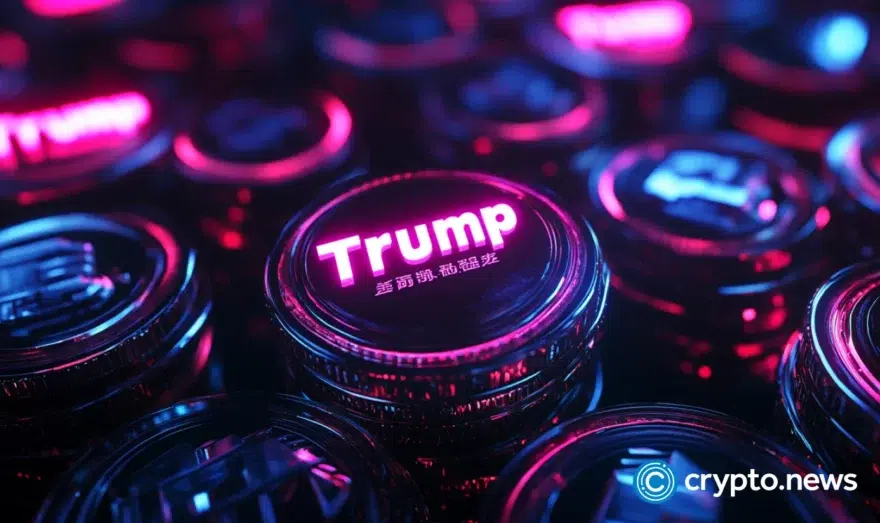The United States SEC’s timely stablecoin guidelines | Opinion

Disclosure: The views and opinions expressed here belong solely to the author and do not represent the views and opinions of crypto.news’ editorial.
Following World Liberty Financial’s announcement of the launch of a non-interest-bearing stablecoin USD1 on April 4, 2025, during a tariff-fueled stock market selloff that erased a record $6.4 trillion in value entering what Wall Street calls a bear market, the US Securities and Exchange Commission issued a notice. This notice paved the way for a more regulated and stable digital asset landscape and said that “Covered Stablecoins,” or tokens backed by physical fiat or high-liquidity assets and redeemable 1:1 with the US dollar, are “non-securities.” And persons involved in the process of “minting” (or creating) and redeeming Covered Stablecoins are exempted from reporting requirements.
The SEC notice gives examples of readily liquid assets that should back a Covered Stablecoin which include USD cash equivalents, demand deposits with banks or other financial institutions, US Treasury securities, and/or money market funds registered under Section 8(a) of the Investment Company Act of 1940, and do not include precious metals or other crypto assets. Covered Stablecoin issuers cannot co-mingle asset reserves with operational capital or offer token holders interest, profit, or yield opportunities. Additionally, the Covered Stablecoin issuers must never use their reserves for investing or market speculation.
Covered Stablecoins don’t include algorithmic stablecoins that maintain their US dollar peg using software or an automated trading strategy, leaving the regulatory status of algorithmic stablecoins, synthetic dollars, and yield-bearing fiat tokens uncertain.
In the US, industry leaders are pushing for regulatory changes that would allow stablecoin issuers to share yield opportunities with stablecoin holders and offer interest. The first such interest-bearing stablecoin was approved by the SEC and registered as a security in the United States a month ago. As Tim Bailey, VP of Global Business and Operations, Red Date Technology, said:
“We believe that there is market demand for government-regulated fiat-backed stablecoins and that this will help unleash the next wave of financial services innovation. Our UDPN Stablecoin Management System is ideal to help regulated stablecoin issuers build and operate these new services.”
Another company, M^0, is building a programmable stablecoin platform with Solana, enabling builders to launch feature-rich, branded digital dollars on one of the most scalable blockchains in the industry by offering digital-dollar building blocks, the best risk-free yield proxy on-chain without the need for cumbersome agreements with programmable yield distribution. As Joao Reginatto, Chief Strategy Officer at M^0, explained:
“Solana’s unmatched speed, scalability, and developer ecosystem make it a prime environment for stablecoin innovation. By bringing M^0’s platform to Solana, we’re empowering builders to create stablecoins that are not only interoperable, liquid, and tailored to their use cases, but that can also perform at any scale. This expansion is a key milestone in M^0’s vision to build the most comprehensive digital money technology stack for developers.”
Stablecoins as safe haven investments
During the stock market blood bath, surprisingly, the US dollar weakened against the safe-haven Swiss franc as concerns about a global recession heightened following US President Donald Trump’s announcement of sweeping tariffs on trading partners. This announcement put in question the US dollar’s unofficial status as the world’s reserve currency, which stems from its relative stability compared to other currencies. Furthermore, the price of gold fell instead of rising as investors did not seek gold, a safe-haven asset to preserve their wealth.
Instead, investors turned to stablecoins with Tether (USDT) leading the way with $144 billion. The total market capitalization of the cryptocurrency market fell by 18%, but the stablecoin sector remained relatively resilient, according to Finance Magnates. The total market cap for stablecoins surged past $230 billion, a 56% increase compared to the previous year, outpacing Bitcoin’s (BTC) price trajectory, suggesting increased demand for stablecoins as a safe haven asset during the stock market downturn, making the SEC’s stablecoin advice very timely.
William Quigley, a co-founder of Wax and Tether, in an interview with me, clarified that during market downturns, people might rush to buy Tether as a safe harbor, pushing its price slightly above a dollar. This behavior mirrors the ins and outs of conventional currency trading, where economic forces dictate value rather than a fixed peg. USDT is not pegged to the US dollar. “Tether has no peg. We do not maintain a peg.” The term “pegged” implies a strict one-to-one price ratio enforced at all times, a concept that Tether does not adhere to. Instead, Tether is redeemable for a dollar, meaning that it can be exchanged for a dollar, but the price can fluctuate in the market based on supply and demand dynamics.














